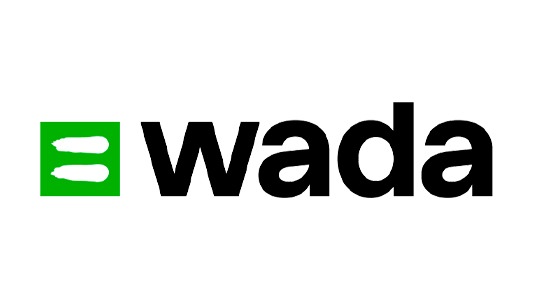
WORLD ANTI-DOPING AGENCY: PROHIBITED SUBSTANCE LIST
THE WORLD ANTI-DOPING CODE INTERNATIONAL STANDARD PROHIBITED LIST JANUARY 2018
SUBSTANCES & METHODS PROHIBITED AT ALL TIMES (IN- AND OUT-OF-COMPETITION) PROHIBITED SUBSTANCES
Any pharmacological substance which is not addressed by any of the subsequent sections of the List and with no current approval by any governmental regulatory health authority for human therapeutic use (e.g. drugs under pre-clinical or clinical development or discontinued, designer drugs, substances approved only for veterinary use) is prohibited at all times.
S1.ANABOLIC AGENTS Anabolic agents are prohibited.
1. ANABOLIC ANDROGENIC STEROIDS (AAS)
a. Exogenous* AAS, including:
1-Androstenediol (5α-androst-1-ene-3β,17β-diol);
1-Androstenedione (5α-androst-1-ene-3,17-dione);
1-Androsterone (3α-hydroxy-5α-androst-1-ene-17-one);
1-Testosterone (17β-hydroxy-5α-androst-1-en-3-one);
4-Hydroxytestosterone (4,17β-dihydroxyandrost-4-en-3one);
Bolandiol (estr-4-ene-3β,17β-diol);
Bolasterone;
Calusterone;
Clostebol;
Danazol ([1,2]oxazolo[4',5':2,3]pregna-4-en-20-yn-17α-ol);
Dehydrochlormethyltestosterone (4-chloro-17β-hydroxy17α-methylandrosta-1,4-dien-3-one);
Desoxymethyltestosterone (17α-methyl-5α-androst- 2-en-17β-ol);
Drostanolone; Ethylestrenol (19-norpregna-4-en-17α-ol);
Fluoxymesterone;
Formebolone;
Furazabol (17α-methyl [1,2,5]oxadiazolo[3',4':2,3]-5αandrostan-17β-ol);
Gestrinone;
Mestanolone;
Mesterolone;
Metandienone (17β-hydroxy-17α-methylandrosta-1,4-dien3-one);
Metenolone;
Methandriol;
Methasterone (17β-hydroxy-2α,17α-dimethyl-5αandrostan-3-one);
Methyldienolone (17β-hydroxy-17α-methylestra-4,9-dien3-one);
Methyl-1-testosterone (17β-hydroxy-17α-methyl-5αandrost-1-en-3-one);
Methylnortestosterone (17β-hydroxy-17α-methylestr-4-en3-one);
Methyltestosterone;
Metribolone (methyltrienolone, 17β-hydroxy-17αmethylestra-4,9,11-trien-3-one);
Mibolerone;
Norboletone;
Norclostebol;
Norethandrolone;
Oxabolone;
Oxandrolone;
Oxymesterone;
Oxymetholone;
Prostanozol (17β-[(tetrahydropyran-2-yl)oxy]-1'Hpyrazolo[3,4:2,3]-5α-androstane);
Quinbolone;
Stanozolol;
Stenbolone;
Tetrahydrogestrinone (17-hydroxy-18a-homo-19-nor-17αpregna-4,9,11-trien-3-one);
Trenbolone (17β-hydroxyestr-4,9,11-trien-3-one);
and other substances with a similar chemical structure or similar biological effect(s).
b.Endogenous** AAS when administered exogenously:
19-Norandrostenediol (estr-4-ene-3,17-diol);
19-Norandrostenedione (estr-4-ene-3,17-dione);
Androstanolone (5α-dihydrotestosterone, 17β-hydroxy-5αandrostan-3-one);
Androstenediol (androst-5-ene-3β,17β-diol);
Androstenedione (androst-4-ene-3,17-dione);
Boldenone;
Boldione (androsta-1,4-diene-3,17-dione);
Nandrolone (19-nortestosterone);
Prasterone (dehydroepiandrosterone, DHEA, 3β-hydroxyandrost-5-en-17-one);
Testosterone; and their metabolites and isomers, including but not limited to:
3β-Hydroxy-5α-androstan-17-one;
5α-Androst-2-ene-17-one;
5α-Androstane-3α,17α-diol;
5α-Androstane-3α,17β-diol;
5α-Androstane-3β,17α-diol;
5α-Androstane-3β,17β-diol;
5β-Androstane-3α,17β-diol;
7α-Hydroxy-DHEA;
7β-Hydroxy-DHEA;
4-Androstenediol (androst-4-ene-3β, 17β-diol);
5-Androstenedione (androst-5-ene-3,17-dione);
7-Keto-DHEA;
19-Norandrosterone;
19-Noretiocholanolone;
Androst-4-ene-3α,17α-diol;
Androst-4-ene-3α,17β-diol;
Androst-4-ene-3β,17α-diol;
Androst-5-ene-3α,17α-diol;
Androst-5-ene-3α,17β-diol;
Androst-5-ene-3β,17α-diol;
Androsterone;
Epi-dihydrotestosterone;
Epitestosterone;
Etiocholanolone.
For purposes of this section: * “ exogenous” refers to a substance which is not ordinarily produced by the body naturally. ** “ endogenous” refers to a substance which is ordinarily produced by the body naturally.
2. OTHER ANABOLIC AGENTS Including, but not limited to: Clenbuterol, selective androgen receptor modulators (SARMs, e.g. andarine, LGD-4033, ostarine and RAD140), tibolone, zeranol and zilpaterol.
S2. PEPTIDE HORMONES, GROWTH FACTORS, RELATED SUBSTANCES, AND MIMETICS
The following substances, and other substances with similar chemical structure or similar
biological effect(s), are prohibited:
1. Erythropoietins (EPO) and agents affecting erythropoiesis, including, but not limited to:
1.1 Erythropoietin-Receptor Agonists, e.g.
Darbepoetins (dEPO);
Erythropoietins (EPO);
EPO based constructs [EPO-Fc, methoxy polyethylene glycol-epoetin beta (CERA)];
EPO-mimetic agents and their constructs (e.g. CNTO-530, peginesatide).
1.2 Hypoxia-inducible factor (HIF) activating agents, e.g.
Argon;
Cobalt;
Molidustat;
Roxadustat (FG-4592);
Xenon.
1.3 GATA inhibitors, e.g.
K-11706.
1.4 TGF-beta (TGF-β) inhibitors, e.g.
Luspatercept;
Sotatercept.
1.5 Innate repair receptor agonists, e.g.
Asialo EPO;
Carbamylated EPO (CEPO).
2. Peptide Hormones and Hormone Modulators,
2.1 Chorionic Gonadotrophin (CG) and Luteinizing Hormone (LH) and their releasing factors, e.g. Buserelin, deslorelin, gonadorelin, goserelin, leuprorelin, nafarelin, and triptorelin, in males;
2.2 Corticotrophins and their releasing factors, e.g. Corticorelin;
2.3 Growth Hormone (GH), its fragments and releasing factors, including, but not limited to: Growth Hormone fragments, e.g.
AOD-9604 and hGH 176-191;
Growth Hormone Releasing Hormone (GHRH) and its analogues, e.g.
CJC-1293, CJC-1295, sermorelin and tesamorelin;
Growth Hormone Secretagogues (GHS),
e.g. ghrelin and ghrelin mimetics, e.g.
anamorelin, ipamorelin and tabimorelin;
GH-Releasing Peptides (GHRPs), e.g.
alexamorelin, GHRP-1, GHRP-2 (pralmorelin), GHRP-3, GHRP-4, GHRP-5, GHRP-6, and hexarelin.
3. Growth Factors and Growth Factor Modulators, including, but not limited to:
Fibroblast Growth Factors (FGFs);
Hepatocyte Growth Factor (HGF);
Insulin-like Growth Factor-1 (IGF-1) and its analogues;
Mechano Growth Factors (MGFs);
Platelet-Derived Growth Factor (PDGF);
Thymosin-β4 and its derivatives e.g. TB-500; Vascular-Endothelial Growth Factor (VEGF).
Additional growth factors or growth factor modulators affecting muscle, tendon or ligament protein synthesis/ degradation, vascularisation, energy utilization, regenerative capacity or fibre type switching.
S3. BETA-2 AGONISTS
All selective and non-selective beta-2 agonists, including all optical isomers, are prohibited. Including, but not limited to:
Fenoterol; Formoterol; Higenamine; Indacaterol; Olodaterol; Procaterol; Reproterol; Salbutamol; Salmeterol; Terbutaline; Tulobuterol; Vilanterol.Except:
• Inhaled salbutamol: maximum 1600 micrograms over 24 hours in divided doses not to exceed 800 micrograms over 12 hours starting from any dose; • Inhaled formoterol: maximum delivered dose of 54 micrograms over 24 hours; • Inhaled salmeterol: maximum 200 micrograms over 24 hours.
The presence in urine of salbutamol in excess of 1000 ng/mL or formoterol in excess of 40 ng/mL is not consistent with therapeutic use of the substance and will be considered as an Adverse Analytical Finding (AAF) unless the Athlete proves, through a controlled pharmacokinetic study,that the abnormal result was the consequence of a therapeutic dose (by inhalation) up to the maximum dose indicated above.
S4. HORMONE AND METABOLIC MODULATORS
The following hormone and metabolic modulators are prohibited:
1. Aromatase inhibitors including, but not limited to: 4-Androstene-3,6,17 trione (6-oxo); Aminoglutethimide; Anastrozole; Androsta-1,4,6-triene-3,17-dione (androstatrienedione); Androsta-3,5-diene-7,17-dione (arimistane); Exemestane; Formestane; Letrozole; Testolactone.
2. Selective estrogen receptor modulators (SERMs) including, but not limited to: Raloxifene; Tamoxifen; Toremifene.
3. Other anti-estrogenic substances including, but not limited to: Clomifene; Cyclofenil; Fulvestrant.
4. Agents modifying myostatin function(s) including, but not limited, to: myostatin inhibitors.
5. Metabolic modulators:
5.1 Activators of the AMP-activated protein kinase (AMPK), e.g. AICAR, SR9009; and Peroxisome Proliferator Activated Receptor δ (PPARδ) agonists,
e.g. 2-(2-methyl-4-((4-methyl-2-(4-(trifluoromethyl) phenyl)thiazol-5-yl)methylthio)phenoxy) acetic acid (GW1516, GW501516);
5.2 Insulins and insulin-mimetics;
5.3 Meldonium;
5.4 Trimetazidine.
S5. DIURETICS AND MASKING AGENTS
The following diuretics and masking agents are prohibited, as are other substances with a similar chemical structure or similar biological effect(s). Including, but not limited to: • Desmopressin; probenecid; plasma expanders, e.g. intravenous administration of albumin,dextran, hydroxyethyl starch and mannitol.
• Acetazolamide; amiloride; bumetanide; canrenone; chlortalidone; etacrynic acid; furosemide;indapamide; metolazone; spironolactone; thiazides, e.g. bendroflumethiazide, chlorothiazide and hydrochlorothiazide; triamterene and vaptans, e.g. tolvaptan.
Except: • Drospirenone; pamabrom; and ophthalmic use of carbonic anhydrase inhibitors (e.g. dorzolamide, brinzolamide); • Local administration of felypressin in dental anaesthesia.
The detection in an Athlete’s Sample at all times or In-Competition, as applicable, of any quantity of the following substances subject to threshold limits: formoterol, salbutamol, cathine, ephedrine, methylephedrine and pseudoephedrine, in conjunction with a diuretic or maskingagent, will be considered as an Adverse Analytical Finding (AAF) unless the Athlete has an approved Therapeutic Use Exemption (TUE) for that substance in addition to the one granted for the diuretic or masking agent.